In my office with President Esther George
During her 40-year career at the Kansas City Fed, President Esther George has collected many mementos, inherited and displayed in her office, as meaningful reminders of the Bank’s mission and her role.
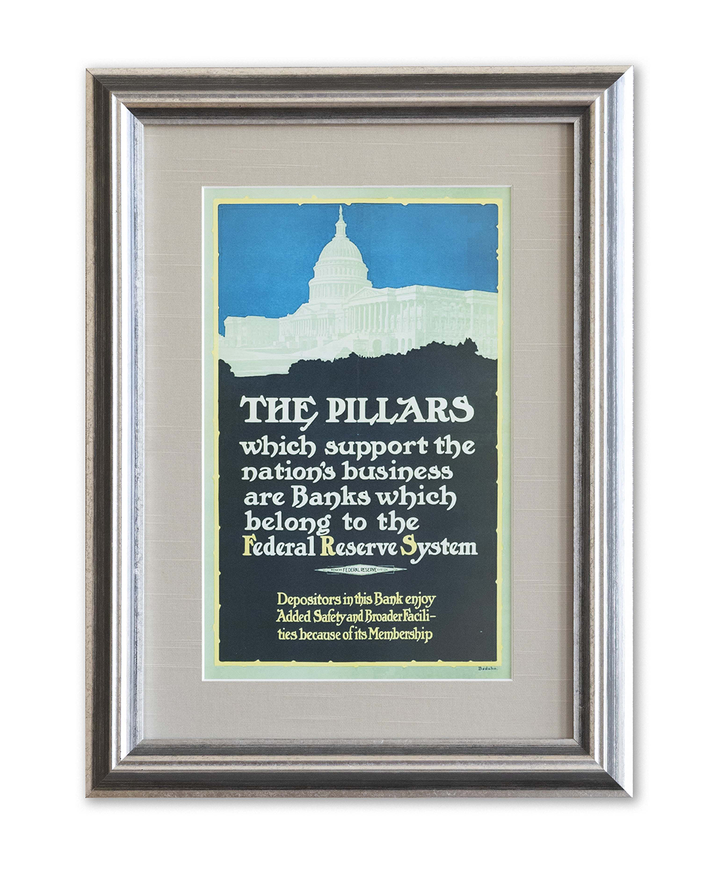
Shortly after the founding of the Federal Reserve System in 1914, a series of posters were created and distributed to member banks promoting the safety of banks with membership in the Federal Reserve, along with a membership decal for their front doors. The posters, with an art deco design reflective of the turn of the century, were framed and hang in George’s office. In 2014, the posters were reproduced as cards to celebrate the Fed’s Centennial and were again provided to member banks, 100 years later
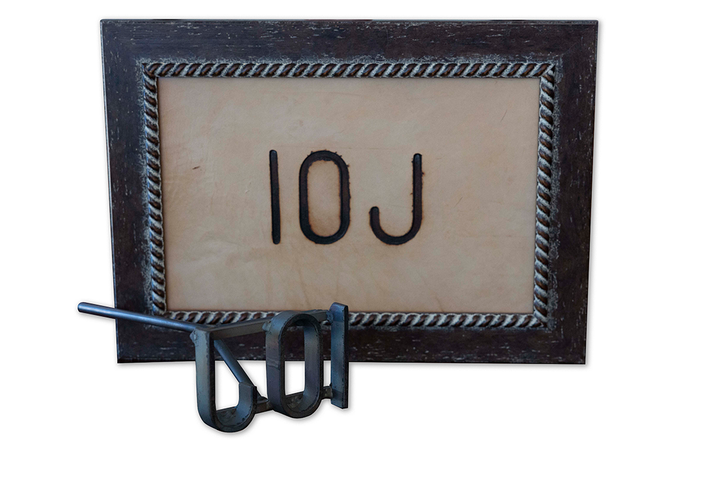
A former Denver Branch Reserve Bank director from Wyoming created a branding iron with the “10J” insignia and presented it to the Bank, along with a framed example of the brand. The “10J” reflects the Bank’s designation within the Federal Reserve System as the Bank serving the Tenth Federal Reserve District. The branding iron has a tag attached with the words “Riding for the Brand.” The phrase comes from a book entitled Cowboy Ethics. In the old west, when a cowboy rode for the brand, it meant that he had signed on to the mission, goals and aims of the ranch owner. In the case of the Bank, the brand reflected the five values of the Bank's brand: integrity, service, growth and development, inclusion and innovation. George took this motto to heart as she represented the Federal Reserve and traveled and connected with individuals throughout the district.
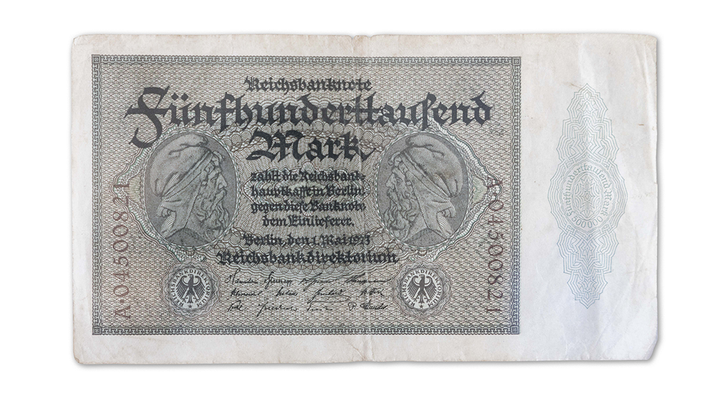
Hanging on the office wall are two old pieces of currency that pre-date George's term as president—one a German Mark and the other a Greek Drachma. To illustrate the impact of inflation, in 1921 the German Mark was worth enough to purchase a large home, while by 1923, the same amount could only pay for a single loaf of bread. The historic bills are a constant reminder of the dangers of inflation, and its relevance in the present day.
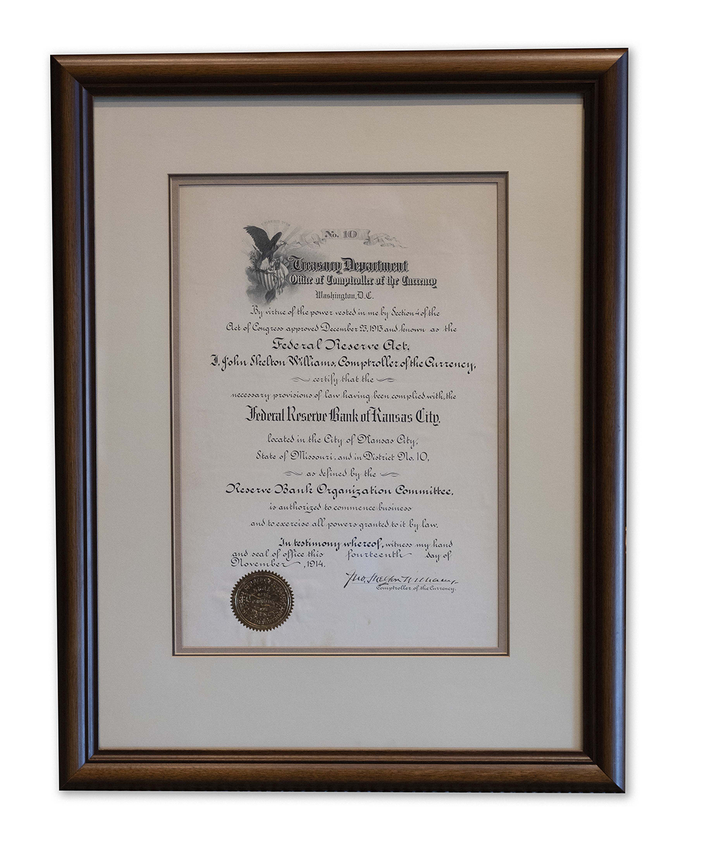
One of the most prominent features in George’s office is the framed original national Bank charter from the Office of the Comptroller of the Currency presented to the Bank on its opening day, November 16, 1914. The Federal Reserve is a combination of public and private components in a federated structure designed to foster broad public support. While the Board of Governors in Washington, D.C., is a government agency, the twelve Reserve banks are considered private corporations. As a result, like any bank, the Kansas City Fed has its own charter. The original charter has been hanging on the wall of the president’s office since it was originally received from the Board of Governors in 1914. The charter reminds George, as it did the eight presidents serving before her, that Congress purposefully designed Reserve Banks to provide operational efficiency and regional connections through locations and boards.
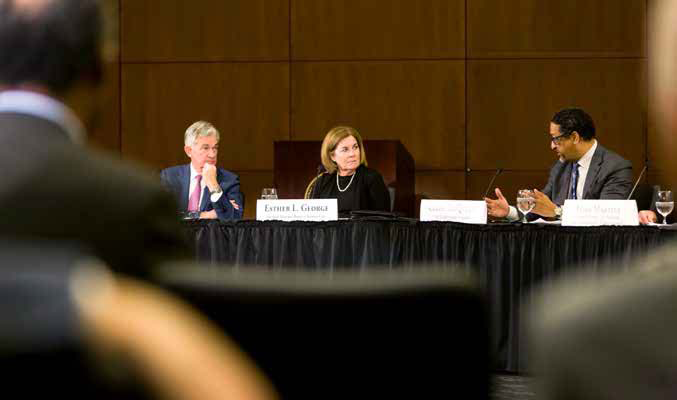
A framed photo is from October 2019, when the Kansas City Fed hosted Federal Reserve Chairman Jerome Powell, part of the System’s Fed Listens program. The event allowed community and business leaders from around the district to engage in a roundtable discussion with Powell and George and share a wide range of economic concerns from their communities and businesses.
The Fed Listens events were open to the media and live streamed on the internet for the public to view. Powell noted the breadth and transparency of the event was unprecedented for the Federal Reserve. A hallmark of George’s tenure as president, she hosted many community and banking events to hear thoughts and opinions from attendees from around the Tenth District.
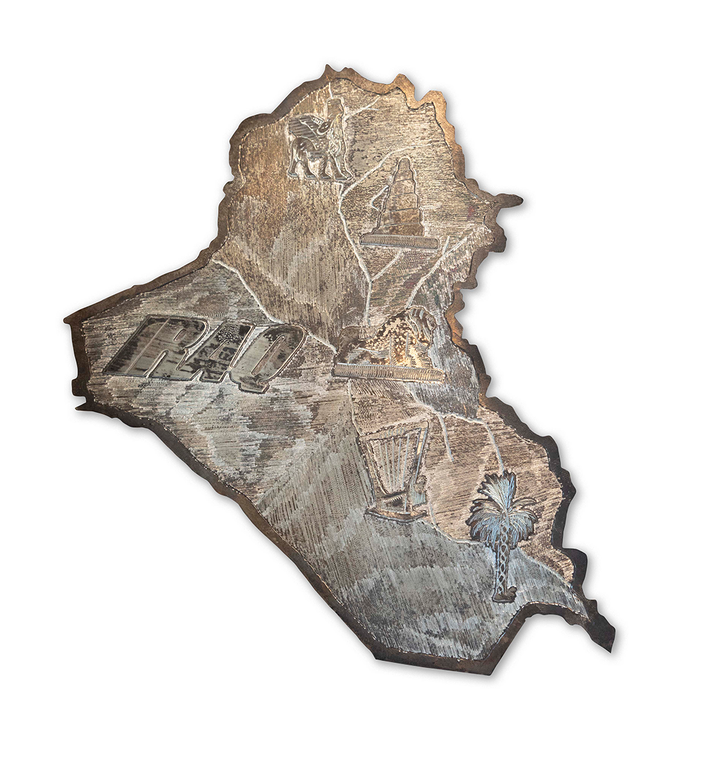
A metal engraving of the country of Iraq, along with photos and other mementos, reflect George's time with the late Sinan Al Shabibi, an economist who was governor of the Central Bank of Iraq. George and Al-Shabibi first interacted many years ago through the Jackson Hole Economic Policy Symposium. For the last 45 years, the event has been hosted by the Kansas City Fed and attended by central bankers, economists, and policymakers from around the world. Al-Shabibi’s participation in the event followed the Bank’s work with the U.S. State Department as part of an initiative to modernize Iraq's central bank. George has developed friendships with central bankers around the world, some of which have included visits abroad.
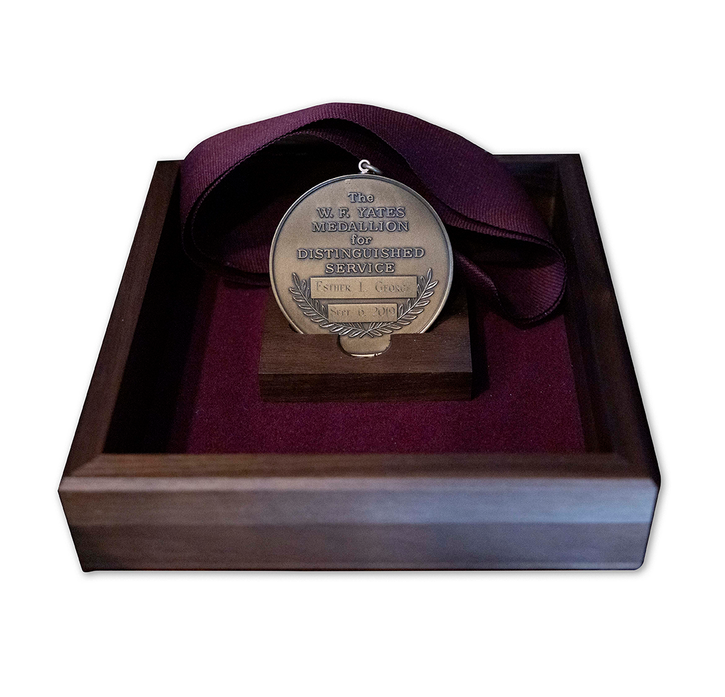
Throughout her career, George has had a commitment to education, both for herself and for those she has led. A culmination to this commitment was in 2015, when she received an Honorary Doctorate from her alma mater, Missouri Western State University in St. Joseph, Missouri. Also in her office is the W.F. Yates Medallion for Distinguished Service, which she received in 2015 from William Jewell College in Liberty, Missouri. These and other certificates throughout the office are reminders of all the schools and universities that populate the bank with talent.
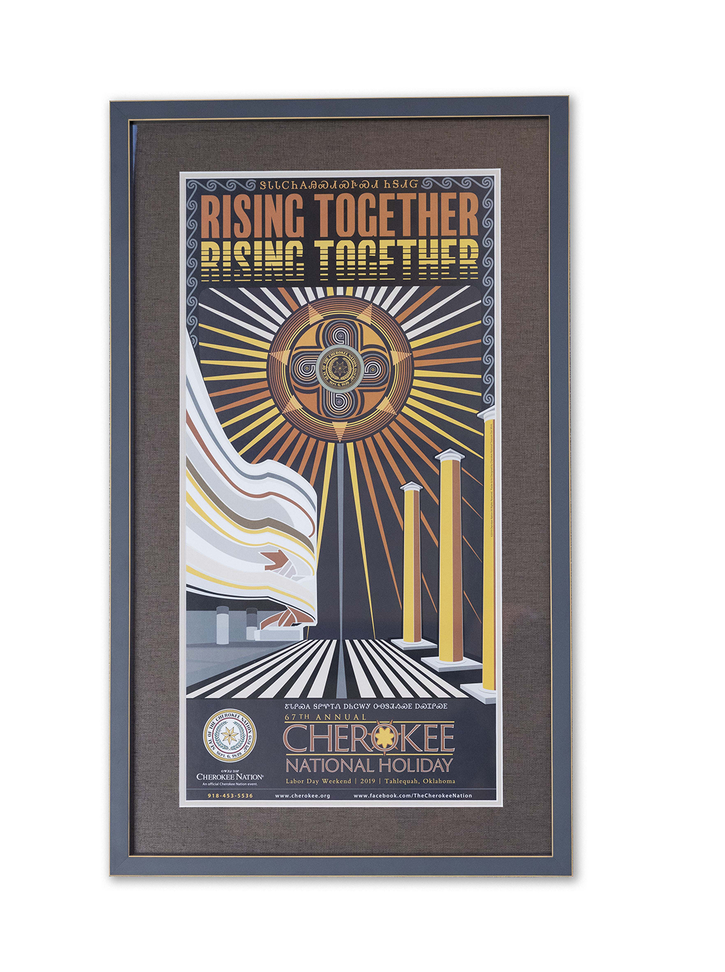
On a wall in the office is a commemorative poster that George received from Susan Chapman Plumb, a Native American and director of the Bank’s Oklahoma City Branch. Plumb is chair and CEO of Bank of Cherokee County, headquartered in Tahlequah, Oklahoma, the heart of Cherokee Nation. Plumb brings a community-minded, community-owned voice to her role, and George sees this as an important perspective for the Federal Reserve to understand – and a reminder of the important diversity of the economy in the Tenth District.
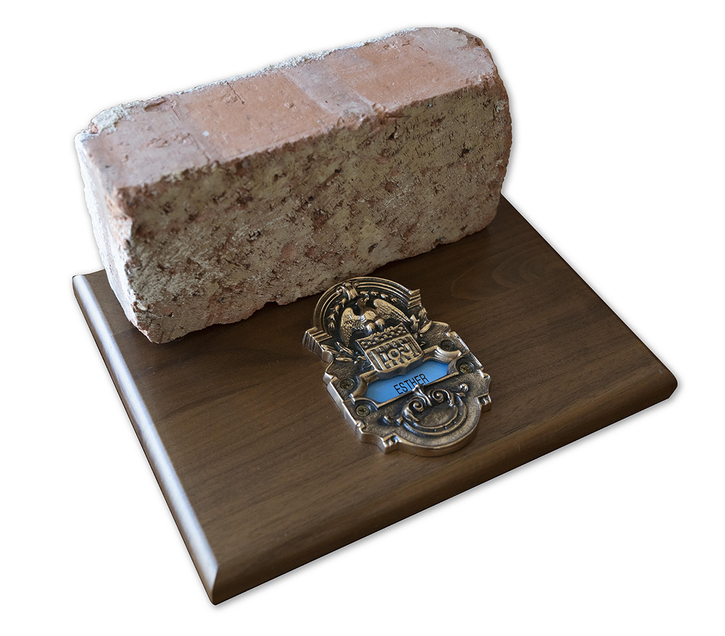
Celebrating the Bank’s long history, George has a brick and brass door plate from the Bank’s former head office at 925 Grand in downtown Kansas City, finished in 1921. George and other members of the Bank’s Management Committee picked up the bricks on a visit to the old building. Although not found in her office, there are several other mementos of the 925 Grand building that were moved to 1 Memorial Drive on the building’s opening in 2008, including a large bronze relief of the Bank’s official seal which now resides in the lobby. Also found in the Bank are several ornate chandeliers that now hang on the Bank’s Executive Floor, and several brass elevator doors that reflect the art deco style of the era that existed throughout the original Bank building. George worked at the 925 Grand building for 26 of her 40 years of service at the Bank.
